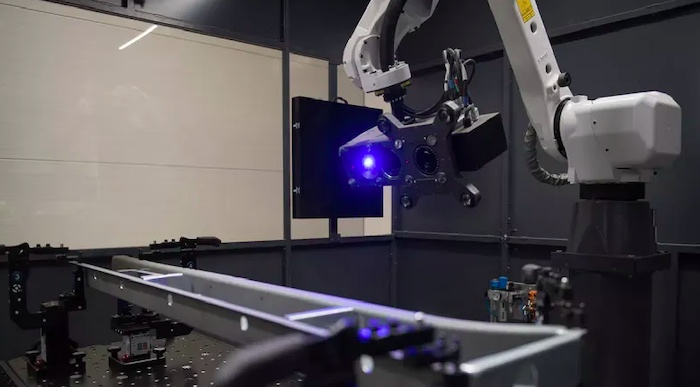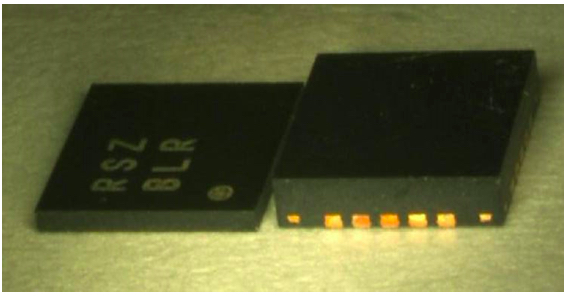In industries that require high-reliability designs, like the automotive industry, it’s common practice for OEMs to perform a 100% automated optical inspection (AOI) of electrical systems post assembly. This process entails a camera autonomously scanning the device under test (DUT) for failures in the form of quality defects or assembly defects.

Automated optical inspection of automotive components. Image used courtesy of Metrology News
Designers in many fields also like to use quad-flat no-lead (QFLN) packages in their designs, oftentimes for significant area savings. Unfortunately, this packaging poses a problem for AOI, rendering it extremely difficult, if not impossible, to efficiently inspect devices and ensure reliability.
In this article, we’ll assess this problem and the widely accepted-solution of side-wettable flanks.
The Problem With QFLN and AOI
In general, QFLN packages and AOI are incompatible because the package design has its terminations on the underside of the package for solder joints. This means that there are no easily solderable, visually-exposed terminations, which are necessary for successful AOI.

Standard QFN package. Image used courtesy of Texas Instruments
Instead, the package body of an individual device is singulated and separated from a “brick” by a sawing operation, leaving an exposed copper sidewall for each termination. Since this exposed copper does not have any plating, it is subject to oxidation. Because of this oxidation, when the device is soldered onto a PCB, these sidewall areas do not solder consistently.
OEMs have been forced to use electrical tests as the only way to determine electrical connectivity of the soldered terminations, proving expensive and inefficient.
The Solution: Side-Wettable Flanks
A widely popular solution to this problem is to pair QFLN with side-wettable flanks.
Failures are easier to observe with side-wettable flanks. Image used courtesy of Nexperia
Wettable flank plating is the process of putting a tin plate on the package underside terminals and the exposed flank. This plating is protective of the copper, preventing oxidation, and hence allowing the solder to adhere to this external flank area.
During the PCB assembly process, the solder joint will extend from the underside of the pad up the sidewall, resulting in an enhanced solder joint between the component and board. The result is that reliable optical inspection can occur with QFLN packages.
“Industry First” LED Drivers With Side-Wettable Flanks
Understanding the importance of this process, Nexperia has just released a new line of LED drivers in DFN packages with side-wettable flanks.
According to Nexperia, the DFN2020D-6 devices represent the first time that an LED driver has ever been made available with this special kind of packaging. Beyond this, this new device boasts a very small footprint of 2 mm x 2 mm and a low profile of 0.65 mm.
Rendering of Nexperia’s new LED drivers in DFN package with side-wettable flanks. Image used courtesy of Nexperia
Some notable specs of this device are an output current of up to 250 mA and a maximum supply voltage of 75 V and the fact that the device is offered with either NPN or PNP technologies.
Opening Doors for Exhaustive Inspections
As cars become more electrified, ensuring reliability in their electrical systems will undoubtedly become a primary concern of designers.
Automated optical inspection is a crucial component in ensuring design reliability, but oftentimes needs packages with side-wettable flanks to perform a fully exhaustive inspection. By introducing side-wettable flanks into LED drivers, Nexperia is working in the right direction for this goal.
As time goes on, it seems that developing more technologies with this kind of packaging will be a worthwhile investment for companies, engineers, and consumers alike.